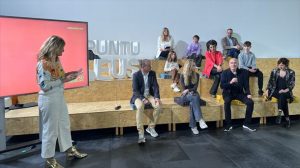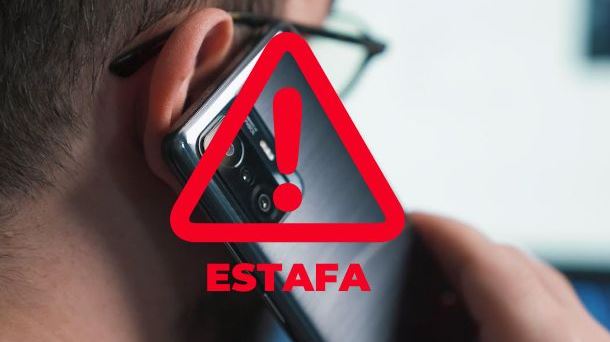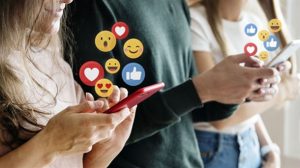Consumer Technology
Xataka
Eva Rodríguez | Xataka
Operators will be prohibited from making telephone calls not requested by the consumer and/or user with the objective or effect of promoting or selling goods or services.
On June 29, the new General Telecommunications Law will come into force. a new regulation that is also known as the anti-SPAM law due to its article 66, which will prohibit commercial calls without prior permission. Will we finally be able to stop receiving these types of calls? It’s the million dollar question.
But what does the law say exactly? Well, “It is prohibited for operators to make telephone calls not requested by the consumer and/or user with the objective or effect of promoting or selling goods or services.. The previous restriction will not apply as long as there is prior consent from the consumer and/or user to receive commercial communications that enables the operator itself to carry out the same.”
For us to understand each other, as of that date, the user is the one who must have given consent to be harassed with commercial calls. However, there’s an exception. And the thing is, if the company that calls you already has a contractual relationship with you (for example, your electricity, gas, internet, telephone company, etc.), they will be able to call you.
This is the “consent trap.” This is where the underlying problem of this type of commercial calls foreseeably lies. The regulations indicate that they cannot be received without prior consent. However, companies have many alternatives to obtain this consent. From emails to associating the permission with the purchase of a product. There is a lot of fine print that we sometimes sign without knowing all the terms and conditions.
What happens if a company breaks the law? Well, they may be fined with sanctions of up to 100,000 euros, for minor offenses, and up to 20 million euros, in the most flagrant cases.
The body in charge of monitoring that this obligation is fulfilled will be the Spanish Data Protection Agency. When they detect or receive a report of a commercial call without permission, they will proceed to contact the company and initiate a sanctioning procedure.
And another important point to keep in mind is that this will affect calls that come from a call center located in the state. If the switchboard is in another country, they will still be able to call you. However, in the event that a company makes commercial calls outside of Spain, the AEPD may also address that company.
Finally, the last exception: we may receive calls of a commercial nature without our consent, specifically those in which their making is essential for the vital interests of the citizen or it can be argued that there is a public interest, they may be from the INE, awareness campaigns or some other type of call related to investigations.
Grammy Awards notice: only people can be nominated, no AIs
We have been with artificial intelligence in the soup for half a year and art is no exception: we have seen programs, scripts, novels, photographs and also songs that have gone viral like ‘Heart on my sleeve’. And what happens when a song becomes a hit? Well, it is likely to be awarded, for example with a prestigious Grammy.
Well no, because the American academy itself has gotten serious about AI: does not veto its use, but establishes a series of strict requirements for all those who implement it in their works and aspire to win an award at the prestigious annual ceremony.
The National Academy of Recording Arts and Sciences has stated that “only human creators” rmeet the necessary conditions to participate in the Grammy Awards. At this point, as we can see, all those works that have been developed entirely by AI are left out of the scene, an exclusion that affects all available categories.
Specifically, the possibility of including elements created with AI within a work is allowed; the human component must be significant. The works that aim for the album of the year category, for example, must be made up of at least 20% human work.
Artificial intelligence has turned the music industry upside down, with a phenomenon like the creation of a Drake song, which sounded like Drake, but was created and performed by AI. So the industry cried foul and threw it off all musical platforms.
Later, Universal Music Group (UMG), the world’s largest record label, started a campaign to get Spotify and Apple Music to block services that use songs to train AI models. But you can’t put barriers in the field and Paul McCartney has already announced that “The Beatles’ final album” will be released this year, which will include John Lennon’s voice thanks to AI.
Tattoos are already a standard ornament, now it’s time to take the next step: become biosensors
Nowadays it is quite normal to find tattoos on people’s skin, for art, memories, tastes… but there is a team of researchers from Turkey that has gone one step further to turn it into the total wearable.
Thus, it has created a technique that allows implanting tattoos capable of communicating passively and wirelessly and that do not require implants, cables or external energy sources. The inventors have named the gadget a backscatter-based nanotattoo sensor. One of the great advances involved in the new development has been to create a mechanism capable of generating its own electrical signals. It achieves this thanks to piezoelectric activity.
To create this smart tattoo, the researchers used two inks. One of them, black, composed of a conductive graphene airgel; and the second, white, composed of zinc oxide and containing nanowires, which is placed on top of the first layer, which also contains a small amount of airgel to allow the union and conductivity of both layers.
So that? Basically to monitor biometric information and transmit it to a device such as a smartphone. Basically, when the painted label receives the radio frequency signals, it reflects some of the signals to establish a link with the phone, so that the mobile can collect and process the information.
Correct monitoring of our health is key to preventing diseases and risk situations, particularly in a context in which non-communicable diseases are gradually gaining weight. Of course, looking at the first images, aesthetically there is still a lot of room for improvement.














+ There are no comments
Add yours